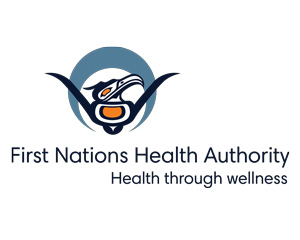Screening and Scoping Phase Findings
On August 4, 2014, the tailings storage facility at the Mount Polley Mine breached. Over the next three days, the four-square-kilometre pond released approximately 17 million cubic metres of tailings water and eight million cubic metres of tailings into Polley Lake, Quesnel Lake and Hazeltine Creek.
At the invitation of local First Nations, the First Nations Health Authority (FNHA) commissioned the initial phases of a Health Impact Assessment (HIA). An HIA is a systematic approach to assessing the health impacts and risks associated with an event, project, or policy, and uses qualitative, quantitative and participatory methods. This work was accomplished by a team led by two international Health Impact Assessment (HIA) experts (Dr. Janis Shandro and Dr. Mirko Winkler). The two main objectives of this project were to identify impacted communities and potential health risks and impacts related to the tailings dam breach using international assessment standards.
As part of the participatory approach used by the project team, six Community Based Coordinators assisted in the project with 22 participating First Nations. Communities identified potential health risks and impacts from the dam failure span from as far north as Fort St. James and south to Fraser Canyon.
This work has documented the following post-breach impacts experienced by First Nation communities:
• Emotional Stress is a key health impact and appears to be shared among all communities. Increased levels of emotional stress are linked to the severity of the event itself, how impacts and risks were and are presently perceived and the amount of uncertainty and trust in the information provided following the breach.
• Direct impacts to traditional territory occurred in three First Nations – Xat'sull, T'exelcemc and Lhatko Dene First Nation. Impacts were immediate and ongoing. Access has been lost to sacred land and territory, traditional food sources and medicine.
• A decrease in individual fishing practice was reported by almost all communities. This has resulted in changes to diet composition, physical activity and cultural practices.
• Impacts to commercial fisheries were reported in six communities. This results in reduced economic income and employment opportunities for community members.
Findings from this work draw attention to the strong links between First Nations, the land and resources, culture and associated health outcomes. The report finds that
salmon fishing plays a central role in a wide variety of determinants of First Nations health, ranging from physical exercise to social cohesion, building and sharing cultural identity and a wide range of factors affecting emotional health.
More holistically, these could be seen as a range of factors leading to a sense of environmental and cultural belonging, in contrast with environmental dispossession.
The study calls for an urgent need to protect the health of the Fraser River system in an integrated manner and states that the health of First Nations in the area is intrinsically linked to the health of this ecosystem and its salmon as a food source. The report also identifies a series of policy recommendations based on the research and experiences working with Indigenous communities and international mining companies worldwide.
FNHA is seeking commitment from industry and government to support the next steps in completing the Health Impact Assessment. The next step in completing the HIA is the collection and participatory analysis of data specific to impacted First Nations. Additional data collection will inform and describe the current status of health determinants and outcomes in affected communities. This will establish a solid health, environmental and socio/cultural baseline that initiates an overarching surveillance and response mechanism to identify, mitigate and manage future risks and impacts to First Nation health. First Nations participating in the HIA view this as particularly important because Mount Polley Mine is currently operating again and has received approval for tailings water discharge into Quesnel Lake.
This disaster was the first major environmental emergency following FNHA assumption of health services. As discussed at regional caucuses, community leadership prioritized this project as a regional environmental concern and collectively supported action to address health concerns. The full report is available on the FNHA website here:
www.fnha.ca/what-we-do/environmental-health/mount-polley-mine-information
For additional information please contact:
Linda Pillsworth
Manager, FNHA Environmental Public Health Services
linda.pillsworth@fnha.ca
604.693.6962
Download the Mount Polley Health Impact Assessment Communique - PDF

